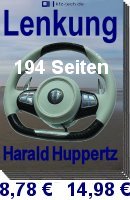It would have made no difference to the outcome of the war anyway. The superior strength of the Americans who had joined in the war, was too great. The supply lines of the Central Powers were too bad and the moral too low. At BMW, which had in the meantime, become a public corporation, the serial-production of the six-cylinder had just started and even a twelve-cylinder Type IV had been developed.
All the effort was in vain, the war was lost and the manufacturing of aircraft engines, also for civil use, was forbidden by the victorious powers. One would later avoid the ban and secretely carry on with their further development, but first however, orders had to be found for the far more than 3000 employees. After all, right up to the end, the aircraft engines had been paid for.
The former patron and co-owner Castiglioni, had also sold his shares and apparently made off. Obviously he had anticipated the restrictions placed on the aircraft industry by the allied forces. What was to be done? The obvious choice, was to search for application areas for the aircraft engines in the utility vehicle- and shipping sector.
In the near future, there would be several areas of activity, which would include the manufacturing of (metal) office furniture and saucepans. After all, one had enough aircraft engine parts. How this could be kept secret from the controlling commissions, thus avoiding their certain destruction, remains unknown.
On the contrary. The follow-up to the IIIA, the six-cylinder IV even achieved the world record for high altitude flight with almost 10.000 meters. Of course, because of the ban, it would not be internationally recognised, quite the opposite, strict sanctions were applied. However, the reputation of the BMW-aircraft engines was once again strengthened, this was something which would have a great deal of significance in the course of the company's history.
Here, we can only shed a little light on these, particularly for Germany, difficult times. Politically, the still young democracy was a shambles. The economy was heading, at first slowly and then very quickly in the direction of a hyper-inflation. One very important reason for this was probably the catastrophic regulations placed on the German economy by the allied powers.
| | ||||||||||||||||||||||
